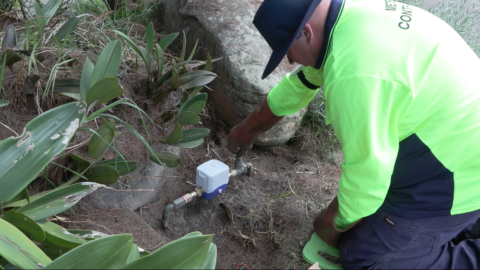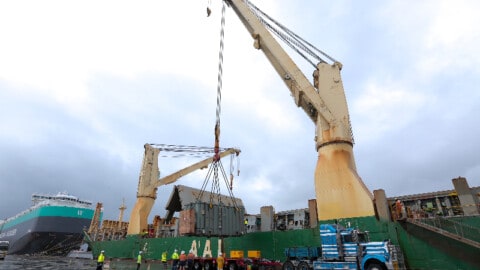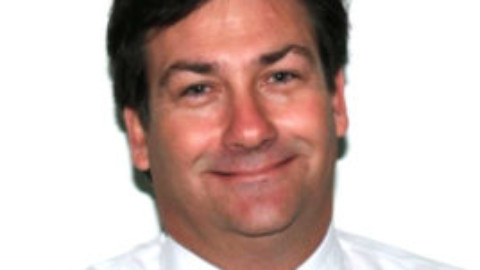New technology which add an additional layer of bushfire protection to the powerline network is being trialled across central and western Victoria. Electricity distributor Powercor has installed a device near Woodend to test the technology called SWER Broken Conductor, which aims to instantly detect a broken powerline and cut electricity before the line hits the ground.
The technology operates on Single Wire Earth Return (SWER) powerlines, which make up about a third of the electricity network and are typically found in rural and remote areas. Powercor is leading the technology trial, which has received $500,000 from the Victorian Government as part of the Department of Environment, Land Water and Planning (DELWP) Powerline Bushfire Safety Program.
More installations are planned for Bendigo and Kerang in coming months. The program’s grants explore emerging powerline safety technologies and systems to further enhance the safety of electricity assets to protect people and property from bushfires. Powercor Asset Engineer, Joe Vinci, said the technology would complement other safety devices already installed on the SWER network and the broader network to keep communities safe.
“We are always exploring new ways to boost the safety and reliability of our network and we are testing if this device may provide another layer of protection on SWER powerlines,” Mr Vinci said. “The technology is designed to respond instantly when a powerline conductor breaks, sending a signal to cut the power to that line before it even hits the ground.” Powerlines can break for a range of reasons, including lightning strikes and trees or branches hitting them during extreme weather events.

Above: swer broken conductor technology being installed. Below: powercor asset engineer Joe Vinci.
Mr Vinci said the technology would work in a similar way to the Rapid Earth Fault Current Limiter devices that protect the broader 22kv three-phase network in high bushfire risk areas, with both technologies acting as a ‘safety switch’ and reacting to faults on the network to avoid fire starts.
The $1.2 million program is the second stage of the SWER Broken Conductor trial, following a successful research component led by Victoria University and Melbourne-based distributor United Energy in 2018. The new phase of the trial runs for 13 months and involves a focus on the communications systems. Powercor is working with DELWP, Victoria University and fellow distributor AusNet Services as part of the trial.
Powercor’s SWER network is already protected by several different technologies, like more than 1200 enhanced Automatic Circuit Reclosers (ACRs) installed across western, northern and central Victoria as part of a $140 million, eightyear program following recommendations out of the Victorian Bushfires Royal Commission.
This comes as Powercor inspections from the air continue across central and western Victoria as part of electricity distributor Powercor’s year-round vegetation inspection and tree-cutting program. Helicopters fitted with advanced Light Detection andRanging (LiDAR) technology to accurately scan for trees and branches growing near to powerlines. This information is fed back to experienced teams that will cut the vegetation away from powerlines to keep the network and community safe.

Above: a lidar point cloud 3d image of the centre of Bendigo, where Powercor’s vegetation management helicopters are currently flying. Below: installation of devices that can instantly detect broken powerlines and cut electricity at spring hill, near Kyneton, Victoria.
Powercor’s vegetation management program is the largest in the state, inspecting and managing vegetation across more than 70,000km of powerline through central, northern and western Victoria, including across hazardous bushfire risk areas. Powercor Head of Vegetation Management, Chris Heinz, said the program was a critical part of keeping the network safe and reliable for customers.
“Our work is about reducing the risk of trees and branches coming into contact with powerlines, which can lead to power outages and fires,” Mr Heinz said. “By inspecting the entire network every year, we are able to determine where and when we need to cut trees and branches away from powerlines,” he said.
Teams then attend each site, both on private and public property, to assess and scope what cutting needs to occur. If crews are required to cut trees on private property, Powercor will notify customers in advance of any cutting unless the work needs to occur immediately for safety reasons.
“We work closely with our contractors to ensure branches are kept clear of powerlines, allowing for expected growth rates,” Mr Heinz said.
“Last year we cut vegetation back from more than 60,000 powerline spans and with this summer’s wetter conditions, we expect to do just as much, if not more, in 2022.”
 Mr Heinz said Powercor had made significant investments towards improving its vegetation management in recent years, including bringing its aerial capacity and LiDAR data analysis in-house. “We’re able to use the data from our LiDAR helicopter scans to form a 3D model of the network.”
Mr Heinz said Powercor had made significant investments towards improving its vegetation management in recent years, including bringing its aerial capacity and LiDAR data analysis in-house. “We’re able to use the data from our LiDAR helicopter scans to form a 3D model of the network.”
Weather permitting, the Bell 505 helicopters fly at an altitude of just over 300m, capturing enormous amounts of data to form an accurate image of powerlines across the region.
Powercor is responsible for the cutting and removal of trees near its powerlines within the boundaries of private properties and on public land as part of Victoria’s requirements set by the state’s energy safety regulator. The helicopters are operated by the network’s affiliate business, Beon Aerial Services.
















